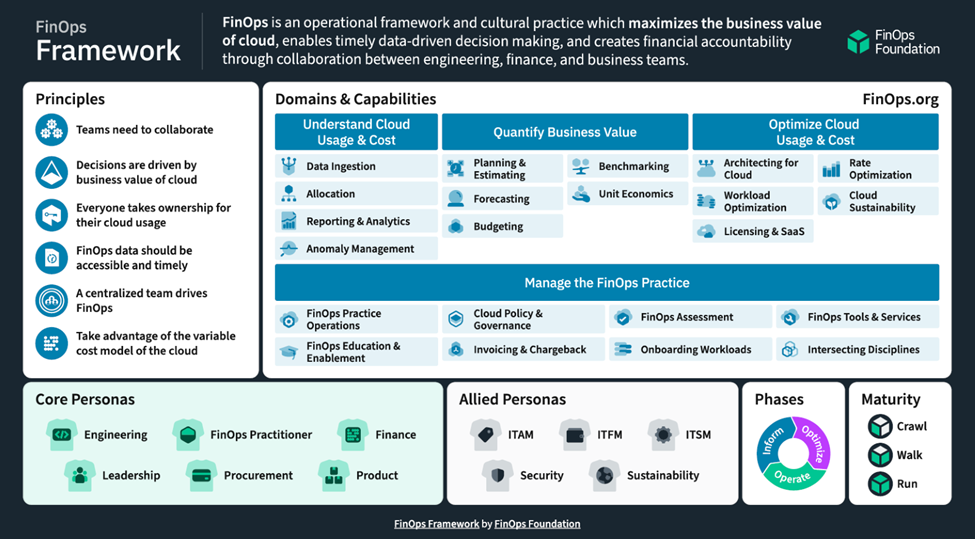
Maximizing Cloud Cost Efficiency: The Power of FinOps in the Public Sector
Blog by Jessica ReynoldsThe Cloud First Initiative has revolutionized the public sector by ushering in a new era of reliability and scalability in government IT services through cloud adoption. As federal agencies progress in their cloud journey, their attention is shifting away from mere cloud migration (been there, done that) and towards effective management and optimization of multi-cloud environments.
With the federal government spending a staggering $12.3 billion on cloud goods and services in FY22, the need for responsible cost control and optimization has become paramount. This is where FinOps, an operational framework and cultural practice, steps in to drive informed decision-making, maximize value, and foster financial accountability.

According to the Flexera 2023 State of the Cloud Report, managing cloud spend has become the top priority for 82% of cloud decision-makers in 2023-2024, even surpassing cybersecurity concerns. This shift in focus reflects the pressing need to manage and optimize cloud costs, allocating resources efficiently. As downward budgetary pressure mounts, government agencies are compelled to strike a balance between reducing operational expenses and investing in cutting-edge technologies like Artificial Intelligence (AI) and Machine Learning (ML) while bolstering cybersecurity measures.
In this evolving landscape of cloud computing and cost management, FinOps emerges as a powerful solution, enabling government organizations to harness the full potential of the cloud while maintaining financial responsibility.
FinOps breaks down silos and establishes a data-driven approach to managing costs by fostering collaboration among engineering, finance, and business teams. The FinOps framework is guided by six core principles that serve as north stars for the activities of the FinOps practice. These principles emphasize the involvement of various stakeholders – including executives, engineers, FinOps practitioners, operations, finance, and procurement – to foster collaboration and drive organizational change. Additionally, the framework follows a maturity model approach, where organizations progress from a reactive “Crawl” stage, to a progressive “Walk” stage, to a proactive “Run” stage, integrating cost considerations into architecture design choices and ongoing engineering processes. This iterative approach allows for incremental growth in scale, scope, and complexity, enabling organizations to assess the outcomes of their actions and determine the value of further FinOps initiatives.
CIO Council Cloud Operations and Best Practices Guide highlights FinOps as a critical component for optimizing cloud spending and resource management. The guide offers valuable insights and resources for organizations looking to enhance their cloud operations. By incorporating FinOps principles, businesses are able effectively monitor, analyze, and control cloud costs while maximizing the value of their cloud investments. This comprehensive resource serves as a roadmap for implementing best practices in cloud operations, ensuring efficiency, cost-effectiveness, and scalability in the ever-evolving cloud environment.
As government agencies continue their cloud adoption journey, the importance of effective cost management and optimization cannot be overstated. With the potential to unlock substantial cost savings and maximize the value of cloud investments, FinOps is poised to revolutionize the public sector’s approach to cloud computing. Early adopters have already reaped notable benefits, and ManTech stands ready to assist. With our customizable FinOps solutions and proven expertise, we ensure secure and cost-effective results throughout all stages of our customers’ cloud projects.
ManTech is all-in on bringing the transformative impact of FinOps to our government customers. In one case, we implemented the FinOps framework in three distinct stages and helped a customer achieve $6 million in annual cost avoidance. Stay tuned to this space for more entries in our FinOps blog series over the coming weeks.

